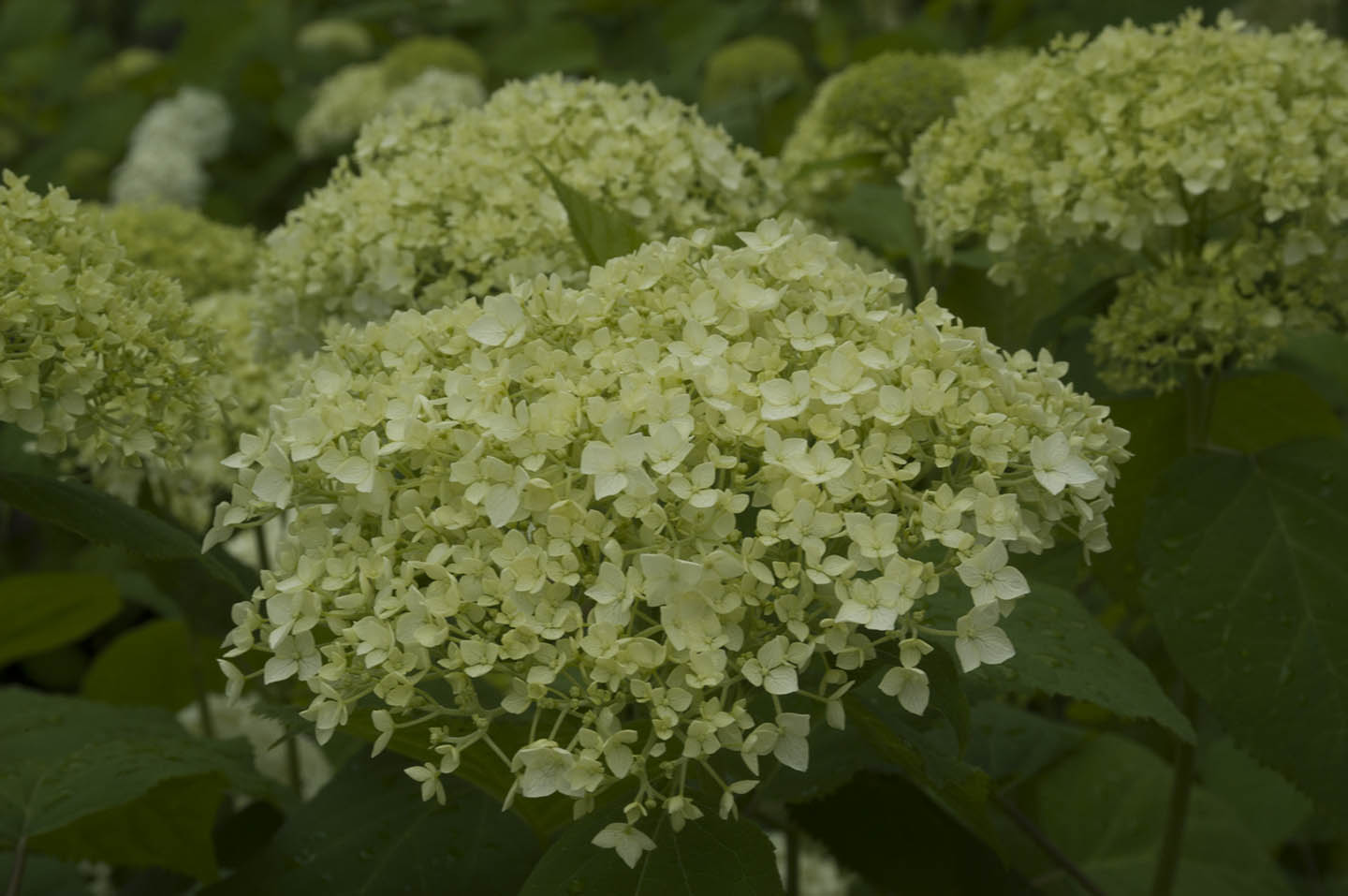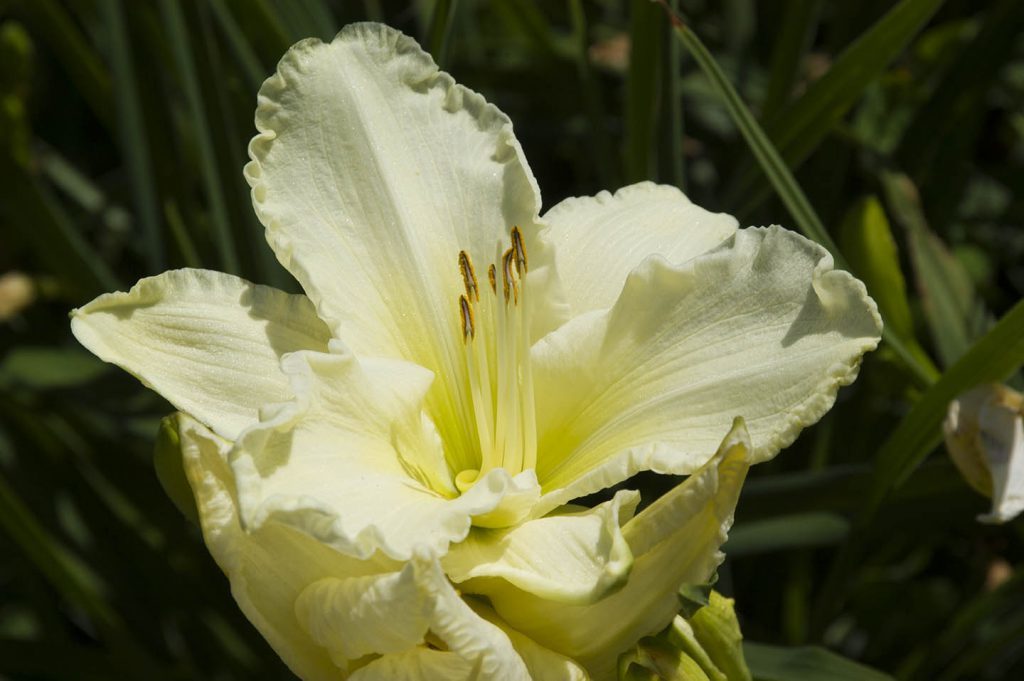
The Zucker Shrub Collection is home to 15 cultivars of Hydrangea, many blooming now in graceful arcs along the garden’s paths. Hydrangea’s bloom profusely when they receive a lot of water, hence its name hydra-ngea. These flowers symbolize enduring love, everlasting friendship and family bonds. Conversely, because the color of some types can change with different environments and soil types, they can bring to mind impermanence, inconsistency, change of mind, or hopeless love. Buddhists used one particular species, Hydrangea serrata, to create sweet tea as part of a cleansing ritual. In Western culture, the hydrangea has many different uses. Native Americans used the root as a diuretic and to relieve muscle pain and burns.

Daylillies in the F. R. Newman Arboretum are also on display in the Zucker Shrub Collection and come in beautiful hues of white, orange, and more. Daylilies are a major food source in various parts of the world. They are very nutritious, often used in salads, soups, and stir-fry. In Greek mythology, Zeus and his wife Hera created the daylily. The scientific name of daylily “Hemerocallis” is in homage to Hera. The daylily is also prominent in Chinese culture, symbolizing forgetfulness or memory loss.